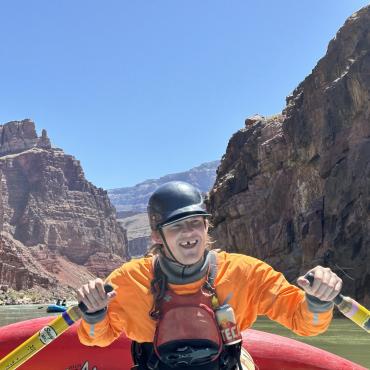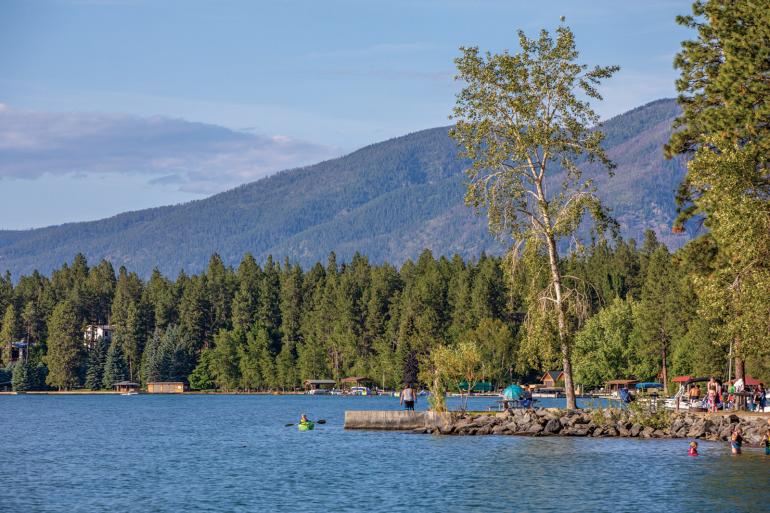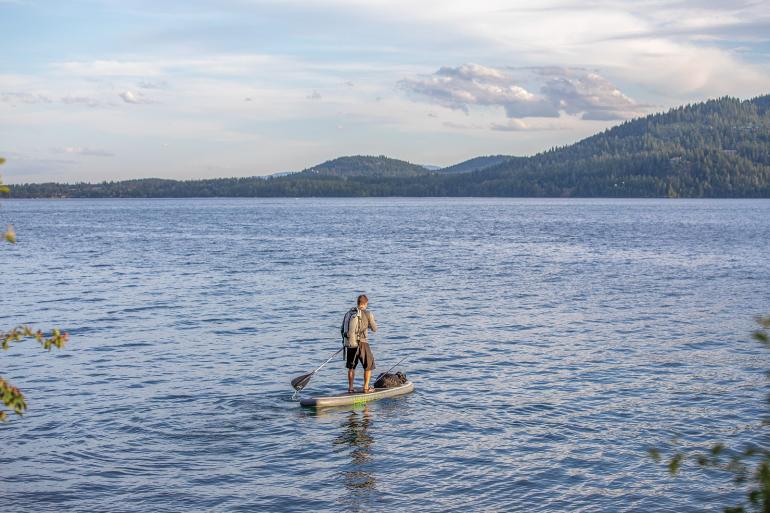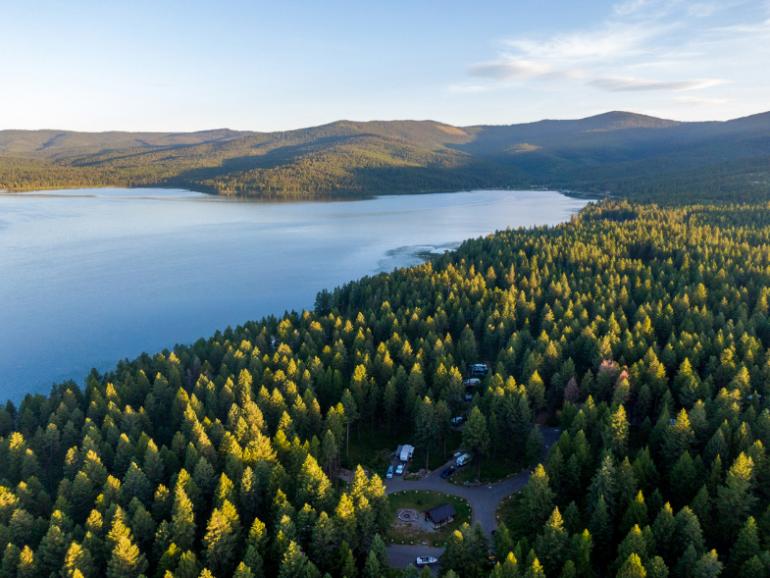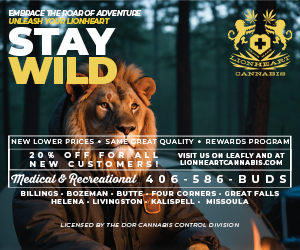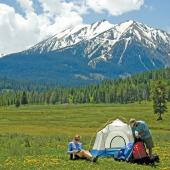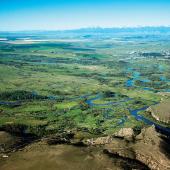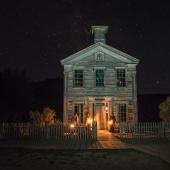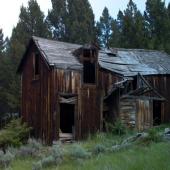Cooling Off
A weekend up north enjoying Montana’s state parks.
For all that southwest Montana has to offer, there is one thing that our corner of the state is severely lacking: lakes. Now don’t get me wrong, there are a good handful that can scratch an itch if need be, but we pale in comparison to what you can find just south of the border (the Canadian border, that is). Last summer, I had a stirring; one that could only be explained by my Minnesotan heritage. I yearned for the peace of mind that only large, still, cool bodies of water could afford, and so I turned my eyes north.
Leaving work, time was of the essence. My roommate and I loaded up the truck, filled our cooler with the finest libations, and set out on I-90 toward Missoula. After a quick refuel at the truck stop, we were finally on Hwy. 93, and we could already smell the cool mountain air. I could feel my excitement growing with each little town we passed. Coming down the hill to St. Ignatius, I was once again struck with awe by the majesty of the Mission Mountains. Snow still clung to their summits, and I began to daydream of backpacking into them to bag a peak or ski a big line. But it would have to wait for another day. I had my sights set on a more leisurely vacation. I was here to cool off.
Flathead Lake was cold from snowmelt, but the air was still and we had no fear of taking a dunk.
We rolled into Lake Mary Ronan State Park around 8pm, but there was still plenty of daylight for us to set up camp before a walk on the shore. As night fell, we nestled into our bags for a quick game of cribbage before drifting off. We needed the rest, anyhow—this weekend was bound to be one for the books.
Morning came bright and early. We didn’t exactly rise with the sun, but we certainly didn’t sleep in, either. The standard morning rituals ensued—boiling water for coffee, scavenging the cooler for eggs and sausage, and some quick stretches in the crisp morning air. We savored our java on the shore, skipping rocks and deliberating over what our first move should be, though it didn’t take long to agree that Wild Horse Island State Park was the obvious choice. After scarfing down breakfast, we repacked the truck and headed south through Dayton to the shores of Flathead Lake.
There, we unloaded the kayaks and schlepped over to the beach at Big Arm State Park. Flathead Lake was cold from snowmelt, but the air was still and we had no fear of taking a dunk. With water bottles, sandwiches, and a couple of cold ones in tow, we began the two-mile paddle out to the island at a leisurely pace. After about 45 minutes, we reached our destination and pulled our crafts ashore, stretching our legs before setting out on a four-mile hike. Though we didn’t see any of the namesake wild horses on our jaunt, the abundance of eagles, ospreys, and bighorn sheep kept us plenty preoccupied. We finished the loop around noon and trekked back to the kayaks to enjoy our lunch of sandwiches and cervezas on the shores of Skeeko Bay. Though it would’ve been nice to hang around a while longer, there was still much to do and no time to waste.
In total, we had hit seven state parks in only two days.
As one of the largest freshwater lakes in the West, Flathead has lots to offer during the summertime. Aside from the ample boating opportunities on the water, there are a myriad of activities one can occupy himself with on the shores—especially with six state parks dotting the lake’s perimeter (and technically interior).
On the paddle back to Big Arm, we again deliberated over what our next stop ought to be. We knew that Somers Beach was day-use only, and with Finley Point as our prospective campsite for the evening, that seemed like the logical decision. Back in the truck, we pointed south and stopped in Polson for dinner and drinks. Admittedly, we had brought plenty of food for the weekend, but there’s nothing better than a juicy burger and cold draft beer after playing in the sun all day. At dinner, we concluded that one more day just wouldn’t cut it and that a trip extension would be in order, so we bought another round and drafted up “excuse” emails to send our bosses.
Though we didn’t see any of the namesake wild horses on our jaunt, the abundance of eagles, ospreys, and bighorn sheep kept us plenty preoccupied.
We snuck into Finley just before dark, and somehow managed to secure a campsite. It had been a long day, and it was time to get some rest. The following morning, we found ourselves north again at the trailhead of Lone Pine State Park unloading mountain bikes for what was bound to be a great ride. As we were gearing up, we noticed an older gentleman in a beefed-up electric wheelchair with tank treads cruising along. Passing him, we couldn’t help but appreciate his joy at being out on the trails. After our ride, we loaded the bikes, threw on our swimsuits, and hightailed it up to Les Mason State Park for a quick paddle around Whitefish Lake. We camped that night at Finley again, reminiscing on what an incredible weekend it had been. In total, we had hit seven state parks in only two days.
Our trip north wouldn’t have been possible had it not been for Montana’s state parks and the Montana State Parks Foundation (MSPF). Thanks to the fine people at MSPF and their fundraising efforts, the very parks we enjoyed are getting some serious upgrades in the coming years. Had it not been for their support, Somers Beach would never have been finalized, and the gentleman in the off-road wheelchair wouldn’t have had the opportunity to experience Lone Pine as he did. Because of MSPF, there will be a new swimming dock at Les Mason this summer.
As you enjoy Montana’s state parks this summer, remember the folks who raise the money to keep them operational—the Montana State Parks Foundation. This year, they are raising money to further their Park Accessibility Project and make our state parks more accessible to folks with disabilities. Interested in learning more or donating to the project? Head over to montanastateparksfoundation.org and click on the projects bar.
For the Greater Good
by Erin Bjorklund
On long road trips, it’s easy to hop between recreation areas and waterbodies—sometimes several in one day. But doing so, whether it be for fishing, boating, hiking, or camping, risks transporting invasive species between ecosystems. Even on a short trip to Missoula, for instance, you cross from the Missouri drainage into the Columbia drainage, risking the transport of invasives both to and from the Greater Yellowstone Ecosystem. No matter how you recreate, here are a few simple ways to prevent the spread of invasive species.
- Remove plants, animals, and mud from boots, gear, pets, and vehicles before heading to a new area. Use a stiff brush to scrub down gear if necessary.
- Stop at watercraft-inspection stations and follow the Clean-Drain-Dry mantra on watersports gear, including boats and fishing equipment, between every use.
- Consider ditching felt-soled wading boots. They can be extremely difficult to clean of invasive species, and for that reason they’re already banned in Yellowstone National Park, and in some other states like Alaska and South Dakota.
- Don’t move firewood more than ten miles. Invasive terrestrials—like emerald ash borer and spongy moth—are killing trees elsewhere in United States, but are not yet present in Montana. Let’s keep it that way. Bring a saw and use local firewood when possible.
Erin Bjorklund is the outreach coordinator at the Invasive Species Action Network. To learn more about invasive species and how to protect our favorite places, visit stopais.org/GYE.

